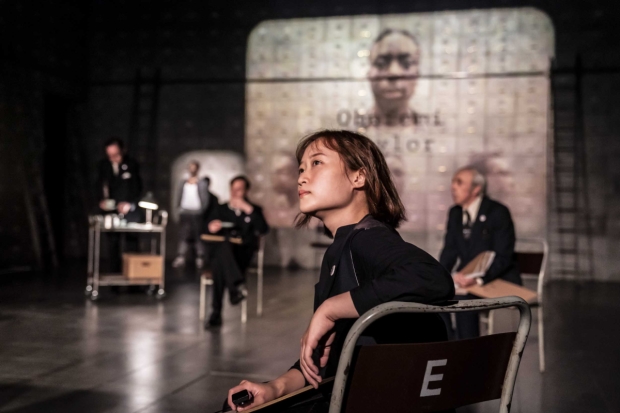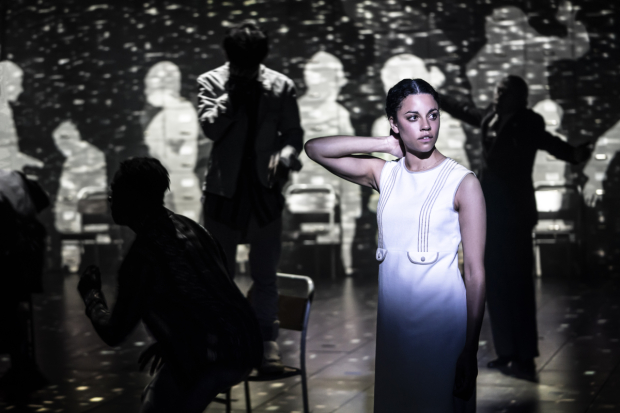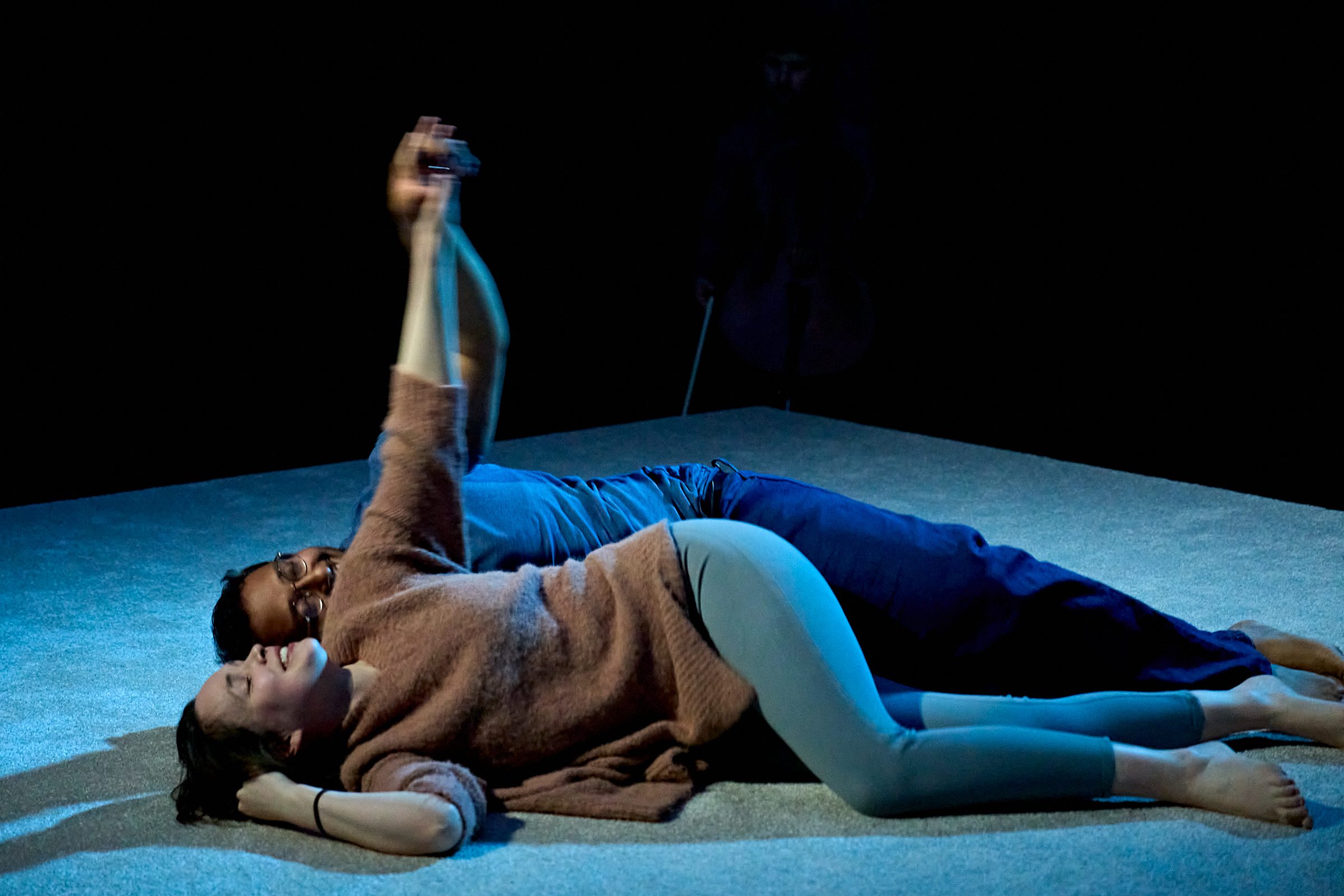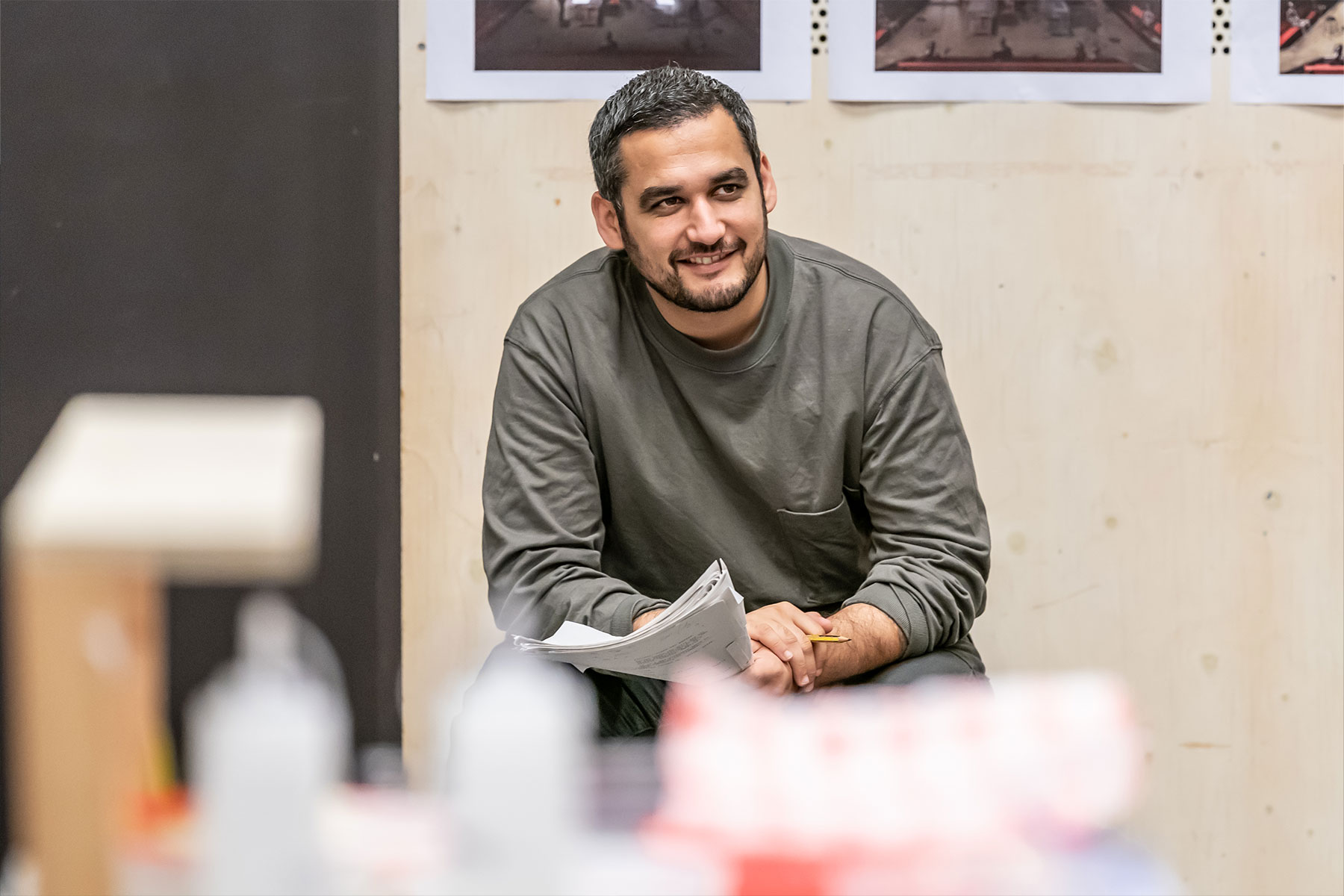Review: After Life (National Theatre)

© Johan Persson
There's something overwhelmingly moving about After Life, a play set in a grey, bureaucratic world where people go after they have died – and it's not just to do with its poignant subject matter.
It grew from a concept developed by the designer Bunny Christie, the director Jeremy Herrin and the writer Jack Thorne, based on the 1998 film by the visionary Japanese director Hirokazu Kore-eda. As it has grown and blossomed it has become a play about life as much as death, and an examination not only of what it means to be human, but also what it means to use your imagination to tell the story of your life.
Nowhere is this truer, of course, than in a theatre, where your mind's eye transforms a stage into an entire world, and this production by Headlong seems to take particular pleasure in turning the Dorfman, with its still socially-distanced audience, into a magical place where stacked filing cabinets can become steps to the stars and the covers of a book can spell out days of the week.
The week is significant because that is how long the people in this nether world have to chose a single memory –"which is most meaningful or precious to you. One which creates a feeling you'll be happy to endure within" – which will then be recreated by a team of guides. As the guided "move on" into this life after death, only the recreation of that memory will accompany them.
It's an intriguing idea, both frightening and comforting, an examination of a state that is neither heaven nor hell except that men and women make it so. The acceptance of their passing, and the choice of the memory, reveals their own attitude to their life.

© Johan Persson
As the play progresses, and the guides quiz their charges about their memories, their personal sadnesses emerge: the old woman who loved and nursed her brother and cannot shake the image of his suffering; the girl who has died so young that she has only a memory of Disneyland to make her happy; the man whose failure to find the perfect remembrance of his wife begins to make him doubt his entire life's worth. "The memory you take can free you or imprison you," says one of the guides – Luke Thallon – whose own state is called into turmoil by the fact that he also is haunted by memories of the same woman.
All of this is beautifully examined in Thorne's script, leavened by jokes about bureaucracy, and evoked by both Herrin's sure-footed direction and Christie's blissfully creative designs. When the guides come to recreate the memories, the stage is suddenly full of activity and invention as they agonise over finding exactly the right fall of cherry blossom, or the perfect shape of an aircraft's wings. The movement direction by Shelley Maxwell, lighting by Neil Austin and sound by Tom Gibbons all add to the suddenly joyous effect.
The wonder and liberation the process triggers are beautifully caught in the performances, particularly from June Watson who changes in front of our eyes from a woman trapped by worries about her cat and a sense of failure into a young girl, resplendent in a red dress, dancing. Thallon, as the most dominant of the guides, is also fine, his voice catching as he struggles to say the word "died".
It's an odd piece, but somehow profoundly satisfying in the subtle ways it deals with grief, doubt and death. Though it was planned long before Covid, it feels a perfect way to deal with some of the emotions triggered by the pandemic, a thoughtful and imaginative return to theatre itself.












